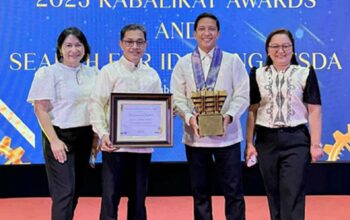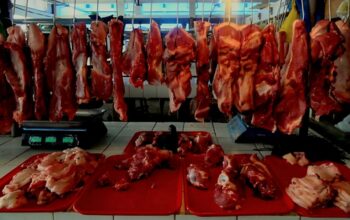
PROVINCES with jurisdiction over the Danajon Bank Double Barrier Reef met for a strategic planning and road mapping workshop to prepare for a Protected Area Suitability Assessment (PASA) on the reef and assess its current condition.
Held on May 5, 2023, at the New Capitol Building in Tagbilaran City, the activity aimed to formulate a strategic plan for conserving the Danajon Double Barrier Reef from habitat degradation caused by human activity and environmental changes, in preparation for the reef to be declared as a protected seascape recognized by the National Government.
The Department of Environment and Natural Resources (DENR) – Region 7 presided over the meeting to declare the Danajon Bank Double Barrier Reef as a protected area under the NIPAS Act of 1992 (R.A No. 7586), which gives government jurisdiction to identify land or marine areas of biological and anthropological significance.
During the road mapping workshop conducted by DENR’s Biodiversity Management Bureau, attendees identified which coastal barangays within the Double Barrier Reef for the assessment, where the PASA Team will assess if the double barrier reef has geological value, historical significance, and unique biodiversity. The double barrier reef’s condition and identify its ecological threats will also be discussed. According to DENR, the PASA has to be conducted by a multi-disciplinary team with a background in natural and social sciences, consisting of partners from the Academe, NGOs, LGUs, and coastal communities.
A one of its kind in the Philippines, and one of the only six double barrier reefs in the world, the Danajon Bank Double Barrier Reef is described as “an area of great significance” by environmentalists due to its distinctive geological formation comprising large sets of coral reefs and habitat for diverse marine species, such as fish, corals, mollusks, seagrasses, and marine mammals. As of the latest data from DENR, 83 Marine Protected Areas (MPA) in Bohol and 4 MPAs in Cebu are within the Danajon Double Barrier Reef.
Siltation, coral bleaching, depletion of marine population, destructive human activities, and lax environmental law implementation are issues stakeholders have identified as recurring problems often found within the Danajon Bank. Bohol, together with the other Provinces, hopes to submit the PASA results this year as a basis to create a legislative bill to protect the Danajon Bank Double Barrier Reef and recognize it as a protected area of scientific and cultural significance.
With the ongoing threat of degradation due to climate change and human activities, stakeholders say this initiative is a “race against time” to rehabilitate the Danajon Bank for future generations within this decade through a collaboration with LGUs, NGOs, Environmentalists, and local communities.
This activity was participated by DENR Region 7 and 8, DENR-BMB, Bureau of Fisheries and Aquatic Resources (BFAR)- Region 7, Bohol Provincial Environment Management Office, the Coastal Conservation Education Foundation (CCEF) NGO, the DENR-Provincial Environment and Natural Resources Offices (PENRO) in the four Provinces involved, the Department of Agriculture– Philippine Rural Development Project (DA-PRDP) Global Environment Facility (DA-PRDP-GEF), various Municipal Environment and Natural Resources Office, the Provincial Government of Southern Leyte, the Provincial Government of Leyte, LGU Lapu-Lapu City, and LGU Cordova in Cebu. (PIMO/GMC)



